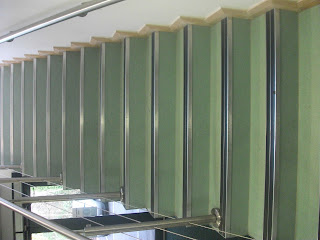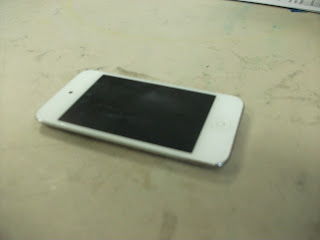Street photography captures people and places within the public. 'It is defined by LFPH as "un-posed, un-staged photography which captures, explores or questions contemporary society and the relationships between individuals and their surroundings."' Even though this style of photography usually includes people, it does not need to. It can be more easily defined as a method than a genre of photography.
What is the decisive moment?
It's about capturing the moment. A moment before or after and this shot would not have had the same effect.
What do you think are the ethical considerations for Street Photography?
I'd be careful of capturing the faces of children and would take peoples privacy into consideration. Even though it may seem acceptable to photograph anything/anyone in the public view, you should still consider certain boundaries.
Do's
Preferably a small camera, such as a bridge camera or an SLR (shoot wide - 35mm and 50mm)
Know the laws
Be considerate and have good judgment/manners
Go to where the people are, where the action is (blend in)
Be curious
be subtle
Don'ts
Don't try too hard to blend in, dress as usual
Avoid being flashy with your gear
Don't stalk people or sneak up on them
MrEllis (James Ellis) Street Photography
http://www.flickr.com/photos/mrelllis/page2/
James Ellis' hometown is Toronto and currently lives in Canada. He posts all of his photography on Flickr and Tumblr, this way he receives emails of people interested in buying prints. Ellis made it into the 'Complex's 50 Greatest Street Photographers' as number 43. I am inspired by Ellis' street photography because his style is very real and creative. He captures moments and bright colours as well as black and white photo's which look just as effective. I really like his style and the eye he has for capturing his photo's.
James Ellis' hometown is Toronto and currently lives in Canada. He posts all of his photography on Flickr and Tumblr, this way he receives emails of people interested in buying prints. Ellis made it into the 'Complex's 50 Greatest Street Photographers' as number 43. I am inspired by Ellis' street photography because his style is very real and creative. He captures moments and bright colours as well as black and white photo's which look just as effective. I really like his style and the eye he has for capturing his photo's.
The image above really captures individuality and reality. I like this photo because of the clear focus and depth of field. The focus is on the man in the center of the camera and with him looking in another direction to the lens it creates emotion.
I really love this photo because of the bright colours and the focus. With the lights not being in focus, it makes them brighter and shows off the effect of the rain a lot more. Also, the warm tones in this photo are complimentary.
These photos below are some that I took in London. They capture the every day life in the busy city and show different emotion.
 |
| I took this image whilst we were walking towards Carnaby Street. It captures the every day business man next to a underground entrance. |
 |
| I couldn't decide which edit I preferred, colour or black and white. So this is the other version which is more bold by being in black and white. |













































